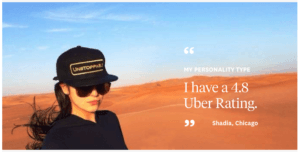On Dating Apps & Demographics: The Heart Wants What I.T. Wants?

How economics and technology can help you find your Tinderella.
So how did you two meet?
Once upon a time, behavioral economics and technology both swiped right. They hooked up. And now we have dating apps. These mobile matching markets have revolutionized the way singles meet. Tinder alone leads to approximately 26 million matches between users per day [1].
For background, Alvin Roth and Lloyd Shapley won the 2012 Nobel Prize in Economics for their work in matching markets, which revealed that “systems designed to elicit people’s true preferences generated better matches, between hospitals and doctors, for example.” Applied to dating, these intermediary platforms leverage Facebook profile information and algorithm-based economic analysis, allowing for significant predictive power around the most anxiety-inducing obstacle in real-world dating: determining mutual interest.
Per Roth and Shapley, the best matching markets are “thick,” benefitting from numerous participants, thereby increasing the chances that you’ll meet someone who also enjoys Carly Rae Jepsen and Long Island Iced Teas. Combined with geo-tracking technology on our smartphones, the likelihood of a connection based on proximity also goes up [1].
By obviating this nerve-wracking step of putting yourself out there, leveraging technology around smartphones and social media, and capitalizing on network effects, dating apps have gained tremendous traction since their advent in 2012.
But will we compatible longer-term? And why do apps matter?
Well, you could meet the one! Or maybe not. But anyway. From a sociological standpoint, dating apps will impact demographics in a big way. In the long-term, they could significantly boost trends toward “assortative mating” (i.e. biased selection of partners based on similar income and skills). Studies posit that this trend accounts for 18% of income inequality growth between 1960 and 2005 in the US [1]. Already though, 5% of Americans who are married or in a committed relationship met online [2], and with more than 500 dating apps currently available on iTunes, this proportion is projected to grow steadily in coming years.
Playing the field? Meet Hinge.
“With a young, increasingly busy and mobile audience […] the market is big. Dating apps are expected to log $628.8 million [in 2015], up from $572 million in 2014 [4].”
Dating app Hinge took note of this opportunity. Their business model mirrored that of their better-known competitor, Tinder: sign up, share info, determine preferences, swipe right, swipe left, match, catfish, swipe left, swipe right, match, date [6]. However, Hinge’s business model was predicated on connections exclusively through shared Facebook friends, an important differentiator that helps mitigate the creepiness factor of online introductions.
“It’s complicated.” Challenges for Hinge, and the industry more broadly. And some solutions.
The Dating Apocalypse. Users started to swipe left on the whole industry, as “81% of Hinge users never found a long-term relationship on any swiping app”; “only 1 in 500 swipes on Hinge turn into phone numbers exchanged”; and “4 of 5 Hinge users can’t recall the first name of their last right swipe [5].”
Over-saturation of the market. Unfortunately, as hypothesized by Roth and Shapley, “congestion” of markets leads users to become overwhelmed by choices, and consequently, to remove themselves from the platform altogether.
App makers responded with specialization. For instance, Bumble, an app where the woman must initiate conversation, targets feminist users, while JDate focuses Jewish singles – mazel [1]!
Hinge responded with its newest operating pivot, which required members to respond to “endearing” questions to create a “story” instead of a profile. Information sharing increased, and their matching market became even thicker. Per company estimates, members are now 4x as likely to initiate conversations, and connections are 9x more likely to result in a date.
Operating & strategy. “Money can’t buy me love” – right? Most dating app operating models are based on some form dynamic pricing. Hinge posits that a subscription model should help “weed out creeps and flakes [5].” Contentious as it may be, dating apps favor those who can afford to be upsold to a paid subscription. Regardless, keeping a free user base might prove additive to the thickness of the matching market.
What else?
A self-defeating proposition. Investors will remain wary, simply because a successful relationship means two fewer users on your two-sided platform. Marketing teams would be wise to advertise success stories – we all have a friend who met their better half on an app – to help with broader brand awareness, and mitigate any lingering taboo associated with virtual connections.
Happily ever after?
Have romance and meeting IRL grown apart? Probably not. All at once though, dating apps are becoming increasingly specialized by type of user, less taboo by public perception, more sophisticated in their algorithms, and more effective in their sharing of information. As a result, they are optimizing networking effects, and perfecting matching markets. For singles out there, sounds like a solid wing.
(798 words)
Sources:
[2] http://www.pewresearch.org/fact-tank/2016/02/29/5-facts-about-online-dating/
[3] http://one.npr.org/?sharedMediaId=413986198:414689895
[4] http://www.wsj.com/articles/the-dating-business-love-on-the-rocks-1433980637
[6] http://www.nytimes.com/2014/03/30/fashion/hinge-a-dating-app-introduces-friends-of-friends.html?_r=0
Photo credits:
Company
http://singleinatl.com/wp-content/uploads/2014/02/Hinge.jpg
http://movieboozer.com/wp-content/uploads/2014/06/relationship-memes.jpg






Love this post and the color on Hinge’s latest updates – I’m sure my single friends are pleased with the increase in conversations and connections!
Totally agree with your sentiments on potential congestion of the market with all of these choices in dating apps. I really like how different apps are trying to differentiate from one another – hopefully this leads to a platform self-selection process that gathers more “like-minded” supply and demand.
My biggest concern with online dating apps is that they are all hinged on matching users to potential mates based on what they believe are the personal preferences / characteristics that they expect for their future soulmate and life partner to have. I read “Modern Romance” by Aziz Ansari this summer (fascinating book if you haven’t come across it!), and that’s where this idea originally crossed my mind (article below gives a brief excerpt / summary of some of Ansari’s ideas). If indeed people do not know what they actually want in a partner, as Ansari alludes to, do you think it would be more beneficial for these dating applications to more heavily rely on algorithms and logic-based rationale to match users? At the very least, they could offer some “suggested” matches based on their extensive user database as well as provide matches per the user’s stated characteristic limitations. Could be an opportunity for even more happily ever afters!
http://www.nytimes.com/2015/06/14/opinion/sunday/how-to-make-online-dating-work.html
Great post. My biggest concern with these apps is how they can monetize their user base. As you mention, there is a clear tension between offering access to the platform for free to create a “thick” network and profitability. Hinge’s decision of going for a subscription model I would say is risky given how important network effects are for these apps, especially seeing the increase in competition in the space. Other apps like Bumble, Happn and Tinder have chosen to let users access the platform for free and charge for additional features such as being able to see who has liked your profile, allowing you to extend the time that a connection remains active, and giving the user the ability to “charm” other profiles (which sends that user a notification). By increasing the size of the funnel these apps benefit from the positive network effects that a large user base provides but instead have more difficulty generating revenues from those users. However, given the surge in the number of dating apps available, I would say that creating a large enough user base quickly is critical to ensure the long term viability of any one of them. Perhaps at the expense of short term profitability.
Regarding assortive mating, I actually think that dating apps can help people to find their significant other outside of their social circle, which is normally composed of persons from a similar socioeconomic background. In this sense, I expect the proliferation of dating apps to help create more diverse couples who otherwise wouldn’t have met.
Growing up in a closed and conservative society, I think this is a very positive thing. Many people who feel that they don’t fit in their communities are now able to more easily find a partner. This in turn can influence such closed social circles to become more open.
This was very entertaining and informative – thanks for writing! It was interesting to think about the point you raised regarding demographics of people who match. It feels like there are two classes of dating apps out there – apps like Match and eHarmony where users have to invest a fair bit in profiles/personality assessments that generate matches vs. apps like Hinge and Tinder that operate more on a swipe basis and have more of a game-based feel with likely lower personal investment per match. It’d be interesting to hear how the outcomes and go-forward potentials different between these classes of apps. Like Mundo’s point above, Aziz Ansari writes in “Modern Romance” that in the early 20th century, a huge majority of marriages in the US happened between people from the same neighborhood, even the same block or building. Since many neighborhoods were divided along ethnic lines, this led to a lot of demographically similar unions. It does feel like there’s more opportunity for this to change with online dating, although maybe matching algorithms aren’t set up to make this happen.
Regarding the monetization challenges of online dating, I think it is interesting to note that the Match Group operates several of the most popular dating websites: match.com, OKCupid, PlentyOfFish, Tinder. Their strategy to introduce these different sites that effectively provide the same services to slightly different target markets at various price points is very effective in my opinion.
An interesting point mentioned in this article is assortative mating, which is highly discussed among researchers of different disciplines, as the article of Richard R. Reeves describes.
As great it is for partners to be similar, as problematic it can be to the society as a whole. The danger of this kind of relationship for example as Reeves states is a growing social and economical gap which could lead to education, success and wealth linked to heritage and ancestry once again. Inequality will grow and discrimination could become worse.
There is an interesting article, worth of reading.
https://www.brookings.edu/blog/social-mobility-memos/2016/04/08/the-rich-marrying-the-rich-makes-the-income-gap-worse-but-its-not-our-biggest-problem/
Technology is supposed to make our lives easier…but dating apps having made the ‘love hunt’ seemingly much more difficult. Even in our own little Harvard bubble, people make comments like, “Oh, I can’t just go up and talk to that girl in another section! I wonder if she’s on Tinder…” We rely on technology to validate our interest, and in some ways, it can paralyze the ability for people to find organic connections. Suddenly, dating becomes almost mechnical. Even as the stigma of finding love online fades away, I still believe the pendalum will swing back towards people wanting more human connection, not being limited by screen swipes. I see the industry evolving towards more predictive matching that takes the game out of the equation. We’ve all been at parties where the people in couples want to use the single person’s Tinder to ‘have a little fun.’ It’s disheartening when the game doesn’t work out for you though, so I see users become disengaged over time and looking for a new alternative. If these companies can shift more towards predictive analytics of you ‘liking someone’ though, I think there’s a real chance of improving matches and thus the opportunity for monitazation. No one is going to pay for a service where they feel like a pawn – they want the service where they are the king or queen (or at least the bishop, because that piece is legit). We need to the Lenddo of the dating world!
Really appreciated your comment about the inherent retention issues baked into dating apps. Many VCs I’ve spoken to in Silicon Valley echoed that retention issues make them skeptical of investing in dating apps.
With the ubiquity of dating apps in today’s world, however, I wonder if dating apps now actually undermine the retentiveness of relationships. Before, the standard reasoning argued that successful users would not return to the platform because they had found happy relationships. Now, I wonder if people’s successful relationship is with swiping itself and exclusive, monogamous relationships represent only temporary hiatuses from online dating.
If that is the case, then dating apps could become a much better investment going forward for VCs. Interesting possibility of technology reshaping the world to its own needs!
Finding a partner to breed, what a life purpose! The most usual way to preserve your genomic wealth should not be taken lightly.
As I think to the various choices, trade-offs and goals of online dating/mating, I cannot help but thinking that information titans could use their data as secret eugenicists.
Why Google or Facebook could not run algorithms through their wide and thick network to recognize patterns and point me to the right match?
Potentially they can compute databases of successful couples and start inferring the measurable elements that are good explanatory factors of a successful couples. We could abandon serendipity to google algorithms. Are the first three links on search not always right? Who knows what is on page 2 anyway?
Indeed data is scary. Let me blink at her.
I agree 100% with your comment around dating apps being a “self-defeating proposition”. The tension reminds me of the tension we saw in Stickk – success for the users provides positive publicity but is actually a negative for the operations and financials of the business. While I applaud Hinge for trying to innovate on how connections are made, I don’t think any dating app has resolved this fundamental tension between what success looks like for users versus what it looks like for the business. I wonder if the move is actually to “vertically integrate.” Instead of trying to increase the number of matches, can dating apps move towards providing more of a relationship counseling service? Thus, once they’ve helped you find your soulmate (or just your next partner), maybe they can continue to stay relevant in your relationship by helping you maintain it.
Great read on digital dating!
I am very curious to see how the introduction of such dating technologies will actually influence psychology and behavior of the society in the long-term. In the ‘old times’ the range of your possible ‘mating partners’ was limited to your hometown, work place or social circle. Having found a partner, usually rarely new occasions arose to easily meet or find new potential partners. In today’s world however, I am convinced that new apps like Tinder, Bumble, Hinge, etc. will significantly change our understanding of concepts like ‘lifetime-marriage’ and monogamy over time.
Tough market out there for sure, for dating and dating apps. I unfortunately missed the wave on all the swiping and catfishing given I have been in a relationship for 5 years, when Tinder just starting conquering the market. That said, my roommate in NY was a dating app power-user, which enabled me to learn a significant amount about the market. One observation I have made is that the role of dating apps has certainly continued to evolve (or devolve could be a better word). When these apps first launched, I believe they provided utility in two main ways: (1) it was fun and exciting to actually have the power to swipe ‘Yes’ or ‘No’ to another person without them having any clue as to your decision, and (2) there was a prospect that you would actually obtain a match and then meet (and potentially ‘hook up’ with someone — side note: it is fascinating at how many ways the consumer dating market can be segmented in terms of use cases). However, given the mass proliferation of these apps today, I believe utility (1) has largely been diluted (i.e., the fun of swiping has diminished greatly). The fun in swiping has diminished so much so that entirely new apps have been created that SWIPE FOR YOU (my roommate was a power user), such that you can go to sleep and wake up with [60 matches] after Tinder swiped through every single woman in Manhattan. I have another friend who wrote an algorithm that not only swipes for him, but also sends a response and follow-up response depending on the woman’s response to his first response. How far will things go?